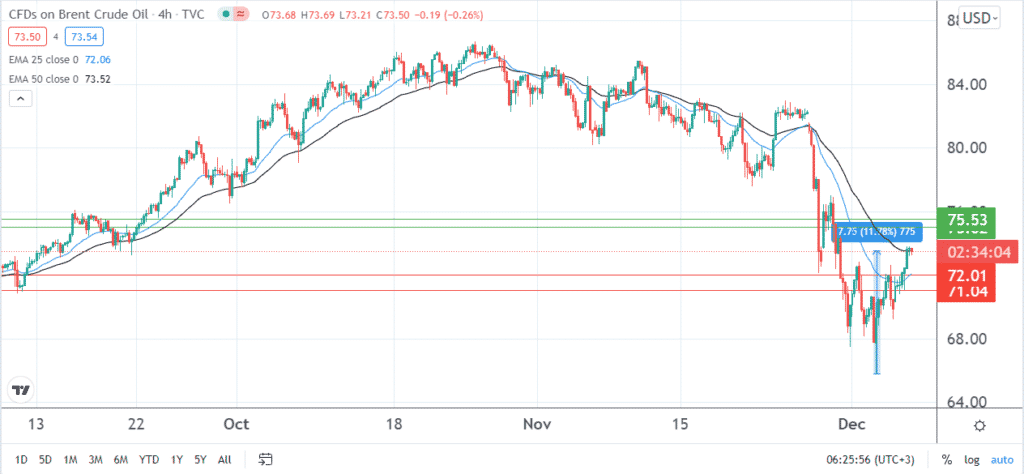
- Several analysts share the opinion that the market is overreacting to the Omicron variant.
- Saudi Arabia’s price hikes, coupled with the stalled Iranian talks, have further boosted crude oil prices.
- Investors are now keen on EIA’s STEO and weekly inventory data.
Analysts’ outlook
Even with the prevalent demand concerns, most analysts have maintained a bullish outlook. To begin with, the Bank of America is sticking to its $85 per barrel forecast for the coming year. Indeed, the bank believes that crude oil prices may surge to $100 if air travel escalates during the holiday season. With reference to the Omicron variant, the bank’s head of commodities, Francisco Blanch, stated that it might “dislocate the trajectory a bit from recovery.”
Goldman Sachs is also of the opinion that the market is overreacting to the Omicron variant. In the past week, the investment bank’s Head of Energy Research & Senior Commodity Strategist, Damien Courvalin, indicated that the market is looking at the worst possible scenario.
According to the analyst, the recent plunge in crude oil price can only be justifiable if there was no airplane flying anywhere in the world for three months. The other extreme scenario would be if the latest variant triggered a situation that’s worse than it was prior to the distribution of vaccinations.
Based on this perspective, the investment bank has maintained its forecast that Brent futures will average at $85 per barrel in 2023. However, in the meantime, crude oil prices may experience some resistance at the psychologically-crucial level of $80.
To boost it further, there will need to be more evidence of tight supplies. As such, investors will be keen on this week’s inventory data from the API and EIA. Last week, the latter indicated that crude oil stockpiles had dropped by 910,000 barrels. While the figure was a lesser draw than the forecasted 1.237 million, it was better than the prior build of 1.017 million. For the week that ended on 3rd December, analysts expect inventories to have declined by 1.885 million barrels.
At the same time, crude oil prices will be reacting to EIA’s short-term energy outlook (STEO), which is scheduled for release on Tuesday. In its October outlook, the agency noted that rising global demand since Q3’20 has contributed to tightening supplies and surging prices. Subsequently, it held that Brent futures would remain above $80 per barrel in December. However, with the gradual building of inventories, the prices will decline in 2022 to average at $72 per barrel.
The outlook comes two days after Saudi Arabia announced its plan to increase its official selling prices (OSPs) in January. Through the state-owned producer, Aramco, customers in Asia will have the price increased by 60 cents in January from December’s #3.30 per barrel above a benchmark. The price will be the highest since the onset of the COVID-19 pandemic in February 2020. Similarly, prices will rise by between 40 and 60 cents in the US. Saudi Arabia’s decision, coupled with the stalled Iranian talks, is expected to support oil’s bull market.
Crude oil price prediction
Crude oil price has been on a rebound for three sessions in a row after dropping to its lowest level in over three months. In the previous week, Brent futures extended its losses to a low of 65.79. It has since risen by about 11.78%.
In November, the commodity recorded its worst monthly decline since the start of the coronavirus pandemic in 2020. Based on both the technical and fundamentals, it is highly unlikely that it will retest last week’s low.
At the time of writing, Brent oil was down by 0.38% at 73.35. On a four-hour chart, it is trading along the 50-day EMA and above the 25-day EMA.
In the ensuing sessions, I expect crude oil price to remain above the psychologically-crucial level of 70. In the meantime, it may hover around 73.50 as the bulls gather enough momentum to push it to the next target at 75 or higher at 75.50. On the flip side, a pullback from its current level will probably place the support zone at 72 or lower at 71.






